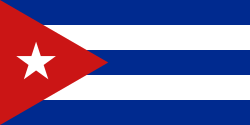Jüri Tarmak
| Jüri Tarmak | ||||||||||||||||
| Nation | ||||||||||||||||
| Geburtstag | 21. Juli 1946 | |||||||||||||||
| Geburtsort | Tallinn, Estnische SSR | |||||||||||||||
| Größe | 193 cm | |||||||||||||||
| Gewicht | 75 kg | |||||||||||||||
| Sterbedatum | 22. Juni 2022 | |||||||||||||||
| Sterbeort | Tallinn, Estland | |||||||||||||||
| Karriere | ||||||||||||||||
|---|---|---|---|---|---|---|---|---|---|---|---|---|---|---|---|---|
| Disziplin | Hochsprung | |||||||||||||||
| Bestleistung | 2,25 m (Freiluft) | |||||||||||||||
| Verein | Dynamo Leningrad | |||||||||||||||
| Medaillenspiegel | ||||||||||||||||
| ||||||||||||||||
| ||||||||||||||||
Jüri Tarmak (* 21. Juli 1946 in Tallinn; † 22. Juni 2022[1] ebenda) war ein sowjetischer Leichtathlet. Er wurde 1972 Olympiasieger im Hochsprung.
Leben
Zunächst spielte Tarmak Basketball und Volleyball und betrieb nebenher auch Leichtathletik. Da er groß und schlank war, wurde er zum Hochsprung geführt. Die Anfänge in dieser Richtung waren bescheiden: Als 17-Jähriger übersprang Tarmak lediglich 1,75 m. Zwei Jahre später schaffte er schließlich 2,00 m, aber zur Weltspitze fehlten ihm immer noch 20 Zentimeter. Im Jahr 1966 konnte der damals 20-Jährige seinen ersten Erfolg verbuchen: Mit übersprungenen 2,10 m wurde er Zweiter der sowjetischen Juniorenmeisterschaften.
1970 wurde er Mitglied der sowjetischen Leichtathletiknationalmannschaft. Seine Trainer waren Viktor Vaiksaar in Tallinn und Pavel Gojchman bei Dynamo Leningrad. Bei den Leichtathletik-Halleneuropameisterschaften 1971 holte er Silber und ein Jahr später Bronze. Den Höhepunkt seiner Karriere erlebte er 1972 mit dem Gewinn der Goldmedaille bei den Olympischen Spielen in München. Er ist der letzte Olympiasieger, der den damals schon als veraltet geltenden Straddle-Sprungstil anwandte.
Bereits als Schüler hatte Tarmak einen Astronomie-Klub ins Leben gerufen und eine Abendschule besucht, um tagsüber als Laborant in einer Sternwarte zu arbeiten. In Leningrad studierte er an der Fakultät für Mathematik und Mechanik der dortigen Universität theoretische Astronomie. Dieses Studium brach er jedoch ab, um sich seinem neu entwickelten Interesse an gesellschaftswissenschaftlichen Fragen zu widmen. Er promovierte und war danach als Dozent für Politische Ökonomie tätig. Im Februar 2001 wurde ihm für seine Verdienste der Orden des Estnischen Roten Kreuzes in der 2. Kategorie verliehen.
Erfolge
- Olympische Spiele 1972 in München: Gold mit 2,23 m vor Stefan Junge (DDR) und Dwight Stones (USA) mit jeweils 2,21 m
- Hallen-EM 1971 in Sofia: Silber hinter István Major und vor Endre Kelemen, beide aus Ungarn
- Hallen-EM 1972 in Grenoble: Bronze hinter István Major (Ungarn) und Kęstutis Šapka (Sowjetunion)
- Jahresweltbestleistung 1972 mit 2,25 m
Sonstiges
Jüri Tarmaks Vater, Aadu Tarmak, war ebenfalls als Leichtathlet erfolgreich und gewann 1943/44 die estnische Meisterschaft im Diskuswurf.
Weblinks
- Sportliche Erfolge und Foto (estnisch)
- Jüri Tarmak bei sports.ru
- Jüri Tarmak in der Datenbank von Olympedia.org (englisch)
Einzelnachweise
- ↑ Suri olümpiavõitja Jüri Tarmak. In: ohtuleht.ee. 22. Juni 2022, abgerufen am 22. Juni 2022 (estnisch).
| Personendaten | |
|---|---|
| NAME | Tarmak, Jüri |
| KURZBESCHREIBUNG | sowjetischer Leichtathlet |
| GEBURTSDATUM | 21. Juli 1946 |
| GEBURTSORT | Tallinn |
| STERBEDATUM | 22. Juni 2022 |
| STERBEORT | Tallinn |
Auf dieser Seite verwendete Medien
Pictograms of Olympic sports – . This is an unofficial sample picture. Images of official Olympic pictograms for 1948 Summer Olympics and all Summer Olympics since 1964 can be found in corresponding Official Reports.
(c) I, Cmapm, CC BY-SA 3.0
The flag of the Soviet Union (1955-1991) using a darker shade of red.

(c) I, Cmapm, CC BY-SA 3.0
The flag of the Soviet Union (1955-1991) using a darker shade of red.

Autor/Urheber: B1mbo, Lizenz: CC BY-SA 2.5
Zeichnung einer Goldmedaille, basierend auf Olympic rings.svg.
Autor/Urheber: B1mbo, Lizenz: CC BY-SA 2.5
Zeichnung einer Silbermedaille, basierend auf Olympic rings.svg.
Autor/Urheber: B1mbo, Lizenz: CC BY-SA 2.5
Zeichnung einer Bronzemedaille, basierend auf Olympic rings.svg.
Olympic Rings without "rims" (gaps between the rings), As used, eg. in the logos of the 2008 and 2016 Olympics. The colour scheme applied here was specified in 2023 guidelines.
US Flag with 45 stars. In use 4 July 1896–3 July 1908. Created by jacobolus using Adobe Illustrator, and released into the public domain. This flag was used during the Spanish-American War.
US Flag with 45 stars. In use 4 July 1896–3 July 1908. Created by jacobolus using Adobe Illustrator, and released into the public domain. This flag was used during the Spanish-American War.
US Flag with 48 stars. In use for 47 years from July 4, 1912, to July 3, 1959.
Flag of Australia, when congruence with this colour chart is required (i.e. when a "less bright" version is needed).
See Flag of Australia.svg for main file information.Die Staatsflagge der Deutschen Demokratischen Republik, vom 1. Oktober 1959 bis 3. Oktober 1990
Flag of Canada introduced in 1965, using Pantone colors. This design replaced the Canadian Red Ensign design.
US Flag with 46 stars. In use 4 July 1908–3 July 1912. Created by jacobolus using Adobe Illustrator, and released into the public domain.
Other version: Image:US 46 Star Flag.svgCAMPIONI dello SPORT 1973/74-Figurina n.46- TARMAK -ATLETICA LEGGERA-Rec
Flag of Second Polish Republic and later People's Republic of Poland in period from March 29, 1928 to March 10, 1980. Red shade used here is HTML "vermilion" #E34234. Proportion 5:8.
US Flag with 44 stars. In use 4 July 1891–3 July 1896. Created by jacobolus using Adobe Illustrator, and released into the public domain.
The Canadian Red Ensign used between 1921 and 1957.
This image has compared for accuracy (mainly colors) using an image from World Statesmen. The only change is making the maple leaves green from red. This image has compared for accuracy (mainly colors) using an image from World Statesmen. The most recent version of this image has changed the harp into one with a female figure; see [http://flagspot.net/flags/ca-1921.html FOTW


























